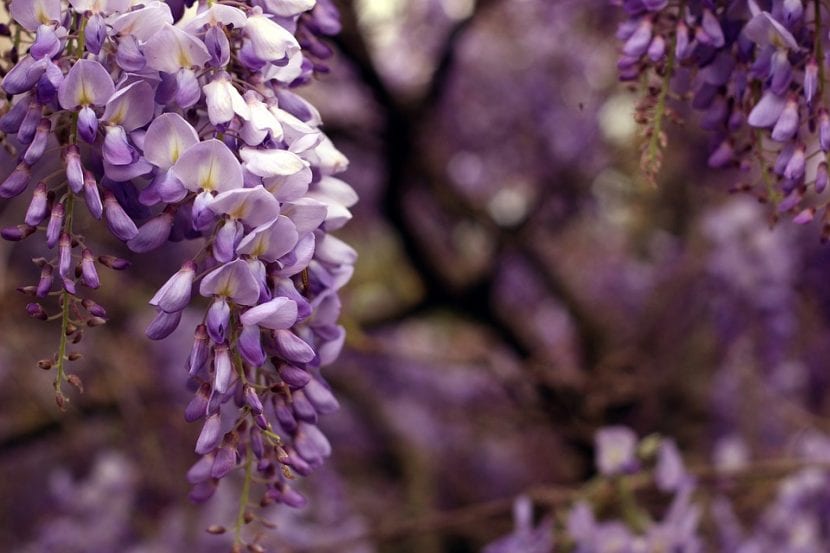
Did you know that there are several types of Wisteria? These climbing shrubs are ideal for growing in large gardens, or even in small and medium-sized ones if they are pruned regularly, since they are quite resistant to branch clippings, so much so that they can even be worked as bonsai.
As if that were not enough, its cultivation is very simple. In fact, by putting them in semi-shade, with acidic soil, and watering them with certain frequency, they will be wonderful. But yes, you have to know the different varieties that there are, because although all of them are cared for in the same way, it is possible that we choose one in particular 😉.
What is the origin of the Wisteria?
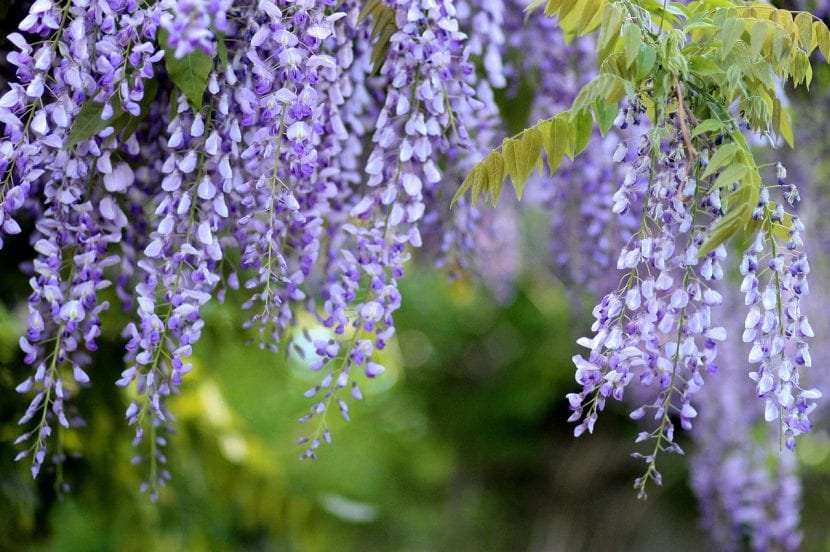
These plants, also known as wisteria or wisteria, they are deciduous shrubs with a climbing habit native to eastern Australia, and to Asian countries such as China, Korea, and Japan. They are widely used as ornamental plants, both in gardens and on patios and terraces, due to their adaptability and beauty.
They belong to the genus Wisteria, which is composed of ten species of which we will see the most popular below.
What types of Wisteria are there?
Wisteria brachybotrys (syn. Wisteria venusta)
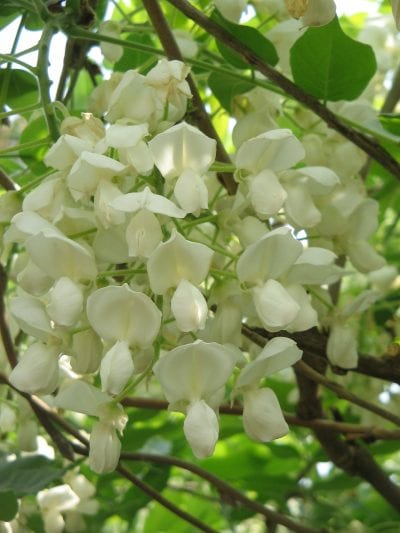
Image - Wikimedia / Meneerke Bloem
Known as silky wisteria or white wisteria, it is a species native to Japan. Reaches 10 meters in height normally, although you can overcome them. Its leaves are pinnate, up to 35cm long, composed of 13 green pinnae or leaflets.
Its flowers are grouped in hanging clusters 15cm long, and are white. The fruit is a poisonous legume.
It resists frosts down to -20ºC.
floribunda wisteria
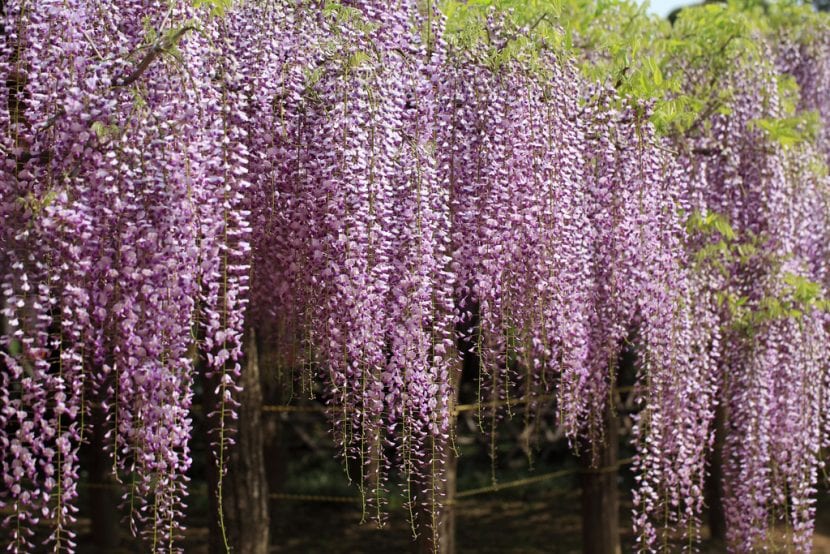
Image - Flickr / Tanaka Juyooh
It is known as Japanese wisteria or japanese wisteria, and is native to, of course, Japan 🙂. It grows to a height of 30 meters, with multiple supports. Its stems are curled on its support, and from them compound, pinnate leaves, 10 to 30 cm in length, sprout. They have 9 to 13 pinnae or leaflets 2 to 6cm long.
It produces the largest cluster of flowers in the entire genus, up to 50 centimeters in length, and they are white, purple or blue in color. The fruit is a velvety brown legume 5-10cm long that finish maturing in summer. These are poisonous.
It can live for more than 50 years, and it resists frosts down to -18ºC.
wisteria frutescens

Image - Wikimedia / David J. Stang
Known as American wisteria, it is a shrub native to the United States, from Virginia to Texas. It also grows in Florida, Iowa, Michigan, and New York. Grows to a maximum height of 15 meters, with pinnate leaves of 9-15 green leaflets.
Its flower clusters are 5 to 15cm long, being the smallest of the genus, and are made up of bluish flowers. The fruits are legumes 5 to 10 cm long that ripen in summer.
It resists without difficulty frosts of up to -20ºC.
Wisteria x formosa
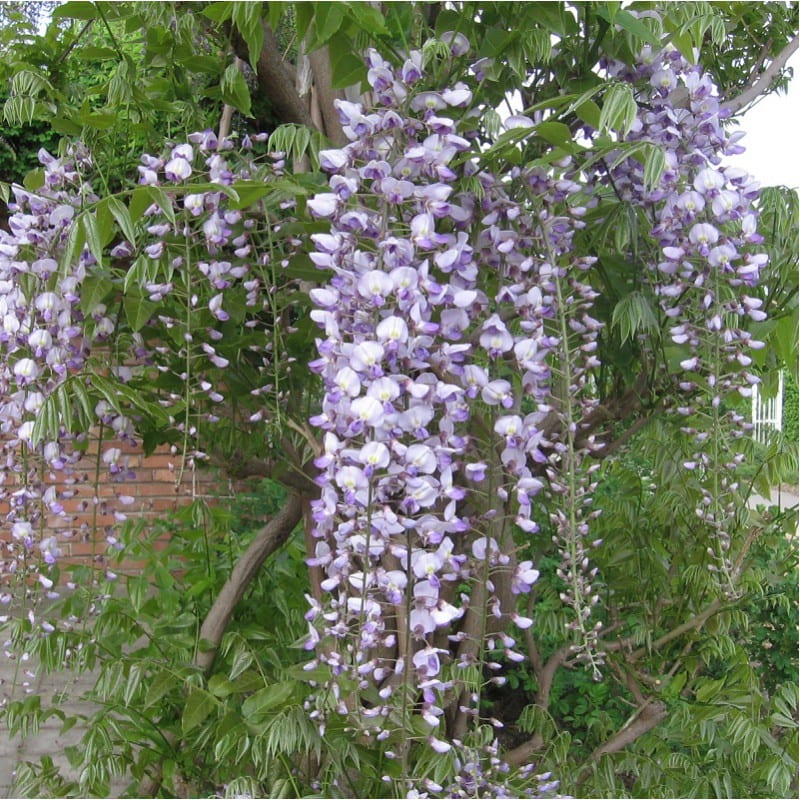
Image - www.plantes-et-nature.fr
This is a hybrid of wisteria chinensis with floribunda wisteria. It grows to a height of more than 20 meters, with climbing stems from which leaves with 9-13 green leaflets or pinnae sprout.
Its flowers are grouped in hanging clusters of violet or pink color, and it produces legumes, often without seeds or with sterile seeds, since the only way to reproduce it is by cuttings.
It resists frosts down to -18ºC.
wisteria sinensis

Known as Chinese Visteria or glycine, is an endemic species of China, specifically of the provinces Guangxi, Guizhou, Hebei, Henan, Hubei, Shaanxi and Yunnan. It reaches between 20 and 30 meters in height, with a fairly dense foliage composed of leaves formed by 9-13 oblong leaflets up to 25cm long and bright green.
It produces flowers in clusters 15-20cm long, white, purple or blue. The fruit is a poisonous, velvety brown legume, 5-10cm long.
Like its "sisters", it is a climbing shrub, but it can be formed into an arboreal shape. It resists up to -18ºC and has a life expectancy of about 100 years.
What uses are they given?
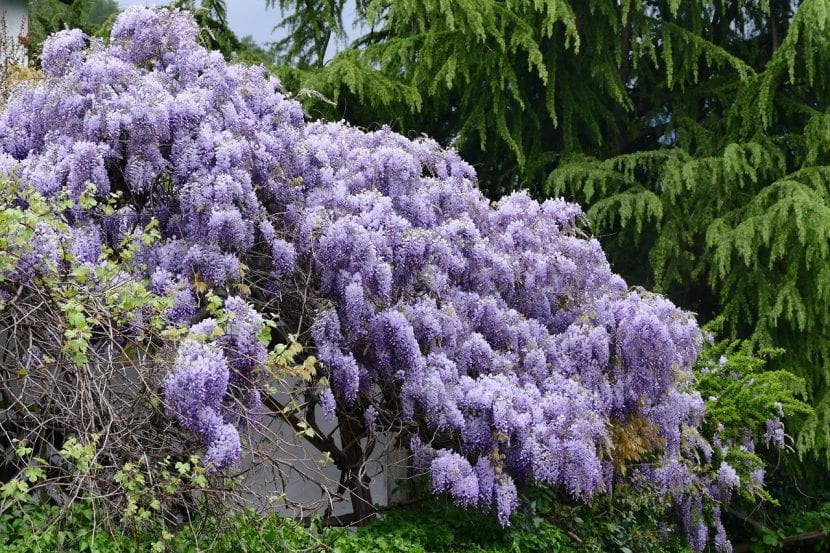
Wisteria is exclusively used for ornamental purposes:
Gardens
They are plants that they look great on lattices, riding a pergolas, covering walls and walls -with support-,… As long as they are protected from direct sun and properly cared for, each spring they will produce their precious flower clusters each spring.
Pots
Although they take up a lot of space, they are climbers that resist pruning well, so it is interesting to grow them in pots or pots, taking into account the following:
- Location: outside, protected from direct sun, otherwise it would burn.
- Substratum: use for acidic plants (for sale here) or, if the climate is Mediterranean, akadama (for sale here) with 30% kiryuzuna (for sale here).
- Irrigation: 4-5 times a week in summer, somewhat less the rest of the year. Use rainwater or lime-free.
- Subscriber: in spring and summer, with fertilizers for acid plants, like this one they sell here.
- Pruning: In late winter remove dry, diseased, weak or broken stems, and trim those that are growing too much.
- Transplant: every 3 years, in spring.
And with this we are done. We hope you enjoyed seeing the 'other' wisteria 🙂.
Hello how are you, thank you very much for the article.
It would be great if you could do an article on the pests or fungi that attack these beautiful plants
A query on the subject that I propose, I have a Wisteria (based on the information in the Article, it must be sinensis or floribunda) and I have noticed that some yellow spots have started to appear on the tips of the older leaves, and on the New leaves have come out like minces.
My plant is small, I have been with it for a year, I bought it and the truth is I do not know if it is a cutting or a seed
I hope you can help me.
Greetings and thank you very much